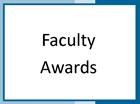Faculty
Deborah Herrington, Ph.D., (Unit Head) Purdue University, Chemical Education
Laboratory instruction and curriculum development, and how students learn and understand organic chemistry. Co-Director of Target Inquiry (Chemistry concentration for M.Ed. program)
Nathan Barrows, Ph.D., University of Northern Colorado, Chemistry Education
Student cognition, misconceptions, and interview methodologies.
John Bender, Ph.D., Brown University, Inorganic Chemistry
Organometallic chemistry of main group elements.
Shannon Biros, Ph.D., Scripps Research Institute, Organic Chemistry
Organic synthesis of ligands for f-element coordination, with applications in nuclear waste remediation and lanthanide separations.
Todd Carlson, Ph.D., Michigan State University, Biochemistry
Biochemistry, microbial physiology and gene regulation, and text book writing.
Paul D. Cook, Ph.D., University of Wisconsin-Madison, Biochemistry
Structural and functional studies of bacterial sugar modifying enzymes.
Brittland DeKorver, Ph.D., Purdue University, Chemistry Education
Students' perceptions of laboratory coursework, student-generated visualizations to model particulate phenomena, and use of narrative tools in curriculum design.
Matthew Hart, Ph.D., University of California-Irvine, Organic Chemistry
Synthesis of novel hormone analogs.
Laura Hawk, Ph.D., University of Chicago, Organic Chemistry
Biomolecular recognition.
Julie Henderleiter, Ph.D., University of Northern Colorado, Chemical Education
Chemical Education, misconceptions and learning issues, preservice teacher preparation.
Mary Karpen, Ph.D., Case Western Reserve University, Biochemistry
Molecular modeling, molecular mechanics of proteins, computational chemistry and computer animations.
Dalila Kovacs, Ph.D., Michigan State University, Organic Chemistry
Exploring heterogeneous catalytic processes as alternatives for green pathways from biomass-based resources toward chemical commodities.
Andrew Lantz, Ph.D., Iowa State University, Analytical Chemistry
Separation and analysis of microorganisms by capillary electrophoresis, equilibrium and partitioning studies including binding constant and interaction parameter measurements, and enantioseparations of pharmaceuticals and other natural products of current interest.
Christopher Lawrence, Ph.D., University of Wisconsin-Madison, Physical Chemistry.
The dynamics of hydrogen bonding fluids by computer modeling.
David Leonard, Ph.D., Cornell University, Biochemistry
Enzymology and protein chemistry of enzymes involved in bacterial antibiotic resistance.
Richard Lord, Ph.D., Indiana University, Inorganic Chemistry
Computational modeling to understand unusual bonding and structures in transition metal complexes.
George McBane, Ph.D., Cornell University, Physical Chemistry
Intermolecular forces and their role in molecular collisions and reactions, studied with both experiments and computation.
Blair Miller, Ph.D., Miami University, Analytical Chemistry
Development of detection schemes for FIA and HPLC.
Felix Ngassa, Ph.D., University of North Dakota, Organic Chemistry
New avenues to nucleoside modification by palladium catalysis; synthetic and computational studies on heterogeneous oligomers.
Thomas Pentecost, Ph.D., University of Northern Colorado, Chemical Education
Course design that focuses on conceptual understanding and development of assessment tools that measure student understanding.
Rachel Powers, Ph.D., Northwestern University, Biochemistry and Structural Biology
X-ray crystallography and structure-based drug design.
Christine Rener, Ph.D., Northwestern University, Biochemistry, Molecular Biology, and Cell Biology
Course design, active learning teaching strategies, and effective faculty development practices.
Stephanie Schaertel, Ph.D., Cornell University, Physical Chemistry
Physical chemistry, laser spectroscopy, spectroscopy of molecules of biological interest, quantum mechanics, chemical education.
Robert Smart, Ph.D., Michigan State University, Organic Chemistry
Photochemical synthesis and molecular recognition of biological molecules.
Brian A. Smith, Ph.D., The Ohio State University, Biochemistry
Utilizing in vivo experiments and enzyme kinetics to decipher the molecular mechanisms of antibiotic nucleotidylyltransferase enzymes in bacteria.
Sherril Soman, Ph.D., Purdue University, Chemical Education
Chemical education, in particular misconceptions and conceptual change.
Scott Thorgaard, Ph.D., University of Minnesota, Analytical Chemistry
Electrochemical studies at nanometer and micrometer scales: single particle detection, electrochemical sensors, and scanning probe microscopy.
Brad Wallar, Ph.D., University of Minnesota, Biochemistry
Enzyme structure/function studies of class C beta-lactamases involved in antibiotic resistance.
R. Marshall Werner, Ph.D., University of Maryland, Chemistry
Protein chemistry and enzymology of rattlesnake venom.
Randy Winchester, Ph.D., University of Florida, Organic Chemistry
The synthesis and study of organosilicon compounds, especially silyllithium compounds, as well as catalytic asymmetric synthesis.



